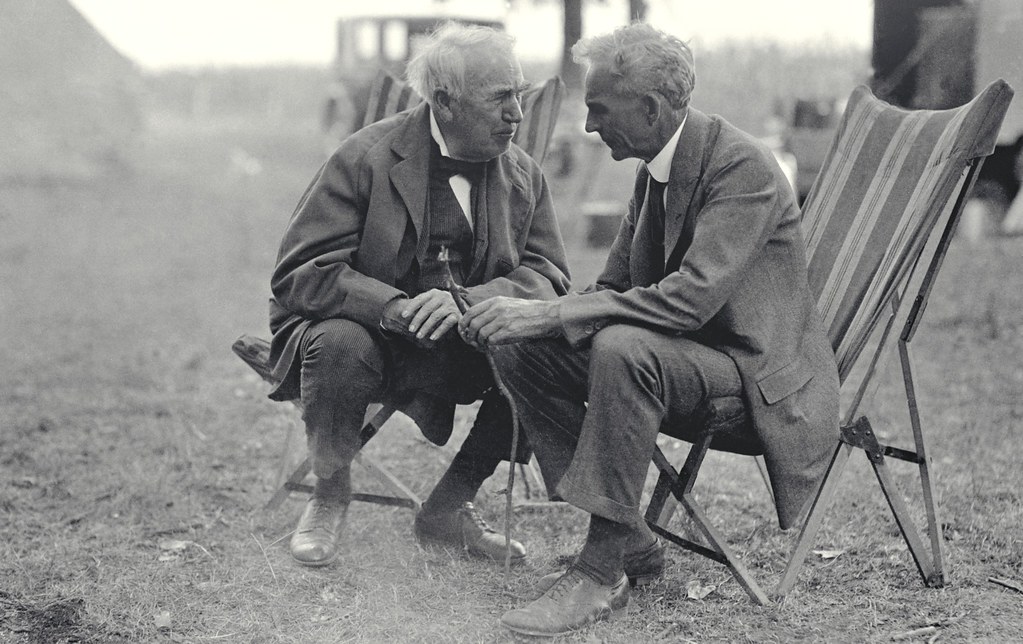
Photo credit Unhindered by Talent
Here is this Friday’s Green Numbers round-up:
-
GE today announced plans to invest approximately ?340 million to develop or expand its wind turbine manufacturing, engineering and service facilities in four European countries?the United Kingdom, Norway, Sweden and Germany
-
Posting information online could preempt FOIA requests
Larry Gottesman, national FOIA officer for the Environmental Protection Agency, said emerging technologies present significant opportunities for agencies trying to eliminate FOIA pileups. EPA has reduced its pending requests by about 96 percent, in part by creating databases of popular information. The agency’s online reading rooms reduce the need to file a request in the first place, according to Gottesman.
-
Ford Saves One Million Dollars…By Shutting Off Computers
Talk about low-hanging fruit. Ford estimates that it will save $1.2 million and reduce its carbon footprint by 16,000 to 25,000 metric tons annually–just by shutting off computers when they aren’t in use
-
Los Angeles tops EPA’s Energy Star buildings list
Los Angeles is once again king of the hill when it comes to the number of energy-efficient buildings, according to the U.S. Environmental Protection Agency?s second ranking of cities nationwide.
The scorecard calculates how many commercial structures in 2009 earned the agency?s Energy Star rating, which is given to buildings that perform in the top 25% of similar buildings nationwide. Eligibility extends to 13 types of structures such as schools, hospitals, office buildings, retail stores and supermarkets.
Los Angeles had 293 buildings with the label in 2009, covering 76 million square feet and saving an estimated $93.9 million in costs.
-
High capital costs of marine energy puts Crown Estate?s 1.2GW target in question, analyst says
The higher capital costs of marine projects means the latest leasing round by The Crown Estate, which awarded contracts totaling 1.2GW, is optimistic at best
-
Water Woes of Mountaintop Removal Coal Mining – 2,000 miles of streams destroyed
An analysis of water tested downstream from mountaintop removal mining operations in Appalachia shows high levels of toxins, with some samples testing 50 times the U.S. safety guidelines, according to a report by the U.S. Environmental Protection Agency (EPA). The independent analysis of previously unreleased data suggests that 14 of 17 sites tested in West Virginia and Kentucky in 2007 and 2009 exceed federal standards for toxins such as arsenic, lead, mercury, and chromium.
-
Wind power takes wings – 41GW this year!
China WindPower Group Ltd, Iberdrola SA and Duke Energy Corp will lead development of an estimated $65 billion of wind-power plants this year that let utilities reduce their reliance on fossil fuels.
The estimate from Bloomberg New Energy Finance assumes a 9 percent increase in global installations of wind turbines this year, adding as much as 41 gigawatts of generation capacity. That’s the equivalent of 34 new nuclear power stations.
-
100 Best Corporate Citizens? What a CROck! | Marc Gunther
Google challenges Internet censorship in China. It invests in solar power, electric cars, geothermal energy and the smart grid, and runs an array of programs to help its employees become more ?green.? It?s consistently voted one of the best places to work. And it has an inspiring mission: to organize all of the world?s information.
Yet Google doesn?t even come close to making the 2010 list of 100 Best Corporate Citizens put together by CRO Magazine, now known as Corporate Responsibility Magazine.
who did?Oil companies Hess Corp. (No. 10 on the list) , ExxonMobil (No. 51, which for years sought to delay action to deal with climate change, says Greenpeace), Occidental Petroleum (No. 26, accused of contaminating the Amazon) and Chevron (No. 56, targeted in a landmark class action suit for creating en environmental catastrophe in Ecuador).
The Southern Co. (No. 71), a coal-burning utility which led the fight against the administration?s climate change bill.
And the Newmont Mining Corp (No. 16)., whose gold mines in Nevada have been major sources of mercury pollution.”
-
CR Announces 100 Best Corporate Citizens List | the CRO
Corporate Responsibility Magazine (the new name of CRO Magazine) today announces its 11th annual 100 Best Corporate Citizens List, known as the world?s top corporate responsibility ranking based on publicly-available information and recognized by PR Week as one of America?s top three most-important business rankings.
-
IBM Smarter Cities Technology Centre to create up to 200 Dublin jobs
Technology company IBM is to create up to 200 jobs in Dublin over the next three years at a new research centre.
The ?66 million development in its Smarter Cities Technology Centre, which will be located at IBM’s Mulhuddart site, is being assisted by the IDA.
Posted from Diigo. The rest of my favorite links are here.





